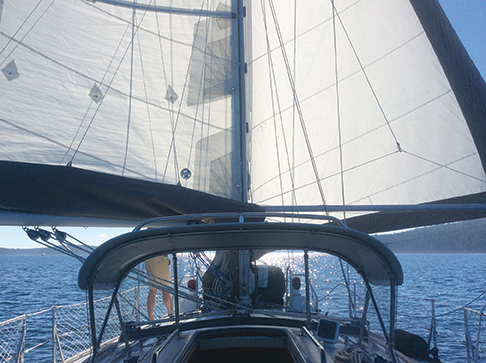noun; small and [possibly] particularly interesting item ofgossip orinformation...
The purpose is to share succinct posts about lessons learned, or things we use or do that work [or don't...] that are common to most of us boaters.
The goal is to garner feedback from those of you having first-hand experience with a different approach/ solution/ product/ or additional useful information to share...
We never assume what we are sharing is the ideal or only; it just seems to best suit our needs [and/or habits and/or budget] from our experiences thus far...
Note: The original blog post [below] has been inducted into Tidbits since it qualifies, but was published 3 years before we initiated the Tidbit series...
➛ ➛ Peruse the right-hand sidebar for the up-to-date list of Tidbits ➛ ➛
We've been researching DIY options for replacing our 'canvas' dodger and bimini with hard tops using the existing 1" stainless steel frames, and adding a rigid windshield to the dodger.
Sounds like a great spring project, doesn't it?
Following are the current finalists in my order of preference by method, then approach.
————————
Using Starboard:
Using prefab FRP [Fiberglass Reinforced Plastic] Panels:
- DIY Hard Dodger
- DIY Hardtop Dodger
- Homemade Hardtop [PDF of article]
Using polycarbonate [e.g., Lexan] sheets:
- Hard Dodger made with lexan sheets [polycarbonate] for top, windshield, and sides
- From Cruising World Dec-2011; p54-55
- From 48 North
- Translucent Polycarbonate [Lexan] reinforced panels [Hard to Top]
Fabrication from scratch:
- Carbon Fiber
- How to build a hard dodger in only 14 days
- New Hard Bimini
- Build a form for molding the top [SV Jackaranda]
- Build form for molding foam cored top [SV Ocelot; lots of excellent construction details]
- Foam core fiberglass dodger [Video by Free Range Sailing]
- Foam core painted epoxy [From the wonderful Epoxyworks.com site]
- Good hard dodger design discussion on CF
- Fiberglass [Tartooga]
- Translucent Polycarbonate [Lexan] reinforced panels [Hard to Top]
Related Resources:
- Excellent forum discussion with lots of examples and photos
- Excellent requirements list for soft dodger/bimini
- An inspirational photo album [Unfortunately this link is broken as of Jan-2020; We will remove in future if not fixed...]
Materials Research:
- Top:
- HDU [High Density Urethane] board instead of Starboard or as core with FRP skins
- Starboard
- FRP Skins [glued back-to-back either with or without foam core]
- Opaque polycarbonate sheet
- See above article Hard Dodger made with lexan sheets from Cruising World
- Windshield:
 |
| 1/2" Starboard formed to match existing dodger frame. (Photo from Roger Dodger article linked above...) |

